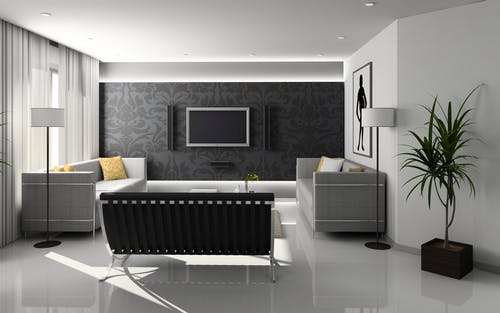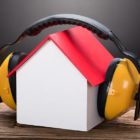There are many potential sources of air leakage that can occur in all properties and buildings, from recessed lighting to thin glass on the windows. Air leakage can cause issues for properties, including loss of heat, increased penetration of unfiltered and external air and poor sound insulation.
However, are there certain areas of your property that are more prone to air penetration and therefore air leakage than others and what is the damage and what are the concerns if there is increased air penetration and interruption to the building envelope?
It may be the case that particular locations in properties are more difficult to heat and cool properly and effectively. This being the case, there will more than likely be noticeable fluctuations in temperature throughout the day and between seasons. If this is the case, you most likely have an issue with your property’s insulation.
Attending to Poor Insulation
Poor insulation can be a common problem in many properties throughout the UK, especially in older buildings with thin glass windows and awkward air gaps in its structure. This is however, easily rectified by installing double glazing wherever possible. Also, for buildings with cavity walls and older building standards, there may be yet further air penetration and disruption to the building envelope.
Air leakage points in any property are a great nuisance, not only affecting the temperature of your home, but also monthly heating bills. This in turn can also have considerable impacts on the environment, adding to your property’s carbon footprint.
Recognising these issues is the first step to tackling the problem and by understanding the source of air leakage in your property, you can begin to fix these areas, thereby reducing their irritating and potentially damaging effects to your home.
What is The Problem with Air Leakage in Properties?
It’s all well and good knowing the sources of air leakage, but what issues can such leakage actually bring, and why do they need to be fixed?
One of the main issues with air leakage in properties is the reduced control you have over the temperature regulation of the property in question. Air leakage will mean that heat escapes faster out of your home and air from outside, which is unfiltered can penetrate into the property, making it difficult to keep a room warm during the colder seasons and cool during the hotter seasons.
Such significant losses of heat from air leakage can cause problems for your heating bills. As it takes more energy to keep a poorly insulated room warm and further energy to maintain the desired temperature, your boiler will also need to work harder, expending more energy and gas. This will in turn raise the amount of energy used in your heating system, and therefore the cost for increased energy usage.
Increasing the amount of energy and heat used throughout your home can have significant effects on the environment, and increase your household’s carbon footprint.
This increase in air movement can also increase the risk of mould and rot occurring within the property. When moist, warm air has the chance to leak into the colder cavities of the property which causes condensation. This increases the chance of mould and mildew developing, which can cause significant damage when left untreated.
Common Sources of Air Leakage in Buildings
There are many different defining features of a property, which cause many different sources of air leakage. As every property is different, sources of potential air leakage differ from building to building. However, there are two main factors that could cause such an issue in most typical homes throughout the UK, these being as follows:
- Gaps in the property’s structure
- Plumbing and other household vents
It is good to know the problem areas with regards to air leakage in your property. Identifying these areas can help you to efficiently tackle the problem, and reduce the negative impacts it can bring.
Gaps in the Property’s Structure
One of the main types of air leakage to cause mould, mildew and rot throughout any property are gaps in areas such as floorboards, walls, door frames and windows which may expose the inside space to external temperatures. It enables air to very easily leak both out and into a property, and can cause considerable damage to the structure of the building, and to your heating bills.
Plumbing and Household Vents
Plumbing and other vents that run through a property can facilitate air leakage. Pipes and vents often require gaps and spaces throughout a property in which to fit and can lead to an external part of the property. This can enable air to leak both out and into the internal space of your home.
How do I Fix Air Leakage in my Home?
When identifying the source of any air leakage, fixing the issue is fairly quick and simple. For example, if this is due to gaps in the property’s structure, for example, via the window frames, filling in the gaps and reinforcing this with good insulating materials can stop air leakage, and reduce issues such as excessive heat loss from occurring.
To find out how bad your air leakage problem is, air tightness testing will assess the extent of air leakage throughout the property and will also locate the problem areas to help to tackle these.
The post Common Sources of Air Leakage in Properties appeared first on RJ Acoustics.



